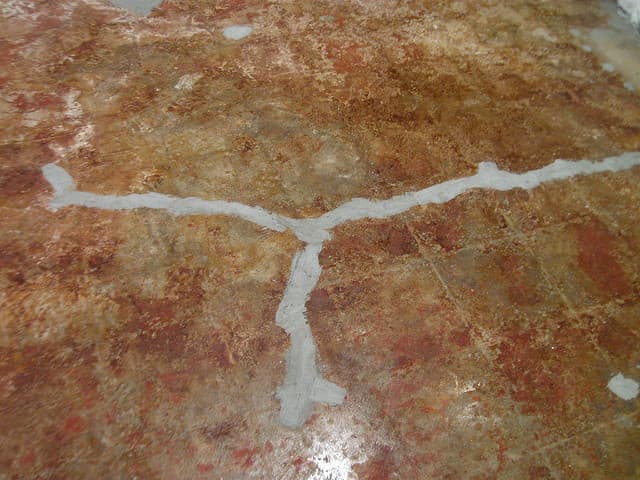
There are many reasons you may be interested in installing a floating floor. Whether it’s because you’re working with a concrete subfloor or you’re looking for the best solution for your current flooring, floating floors have become a popular choice for many.
This type of flooring has several advantages and comes in various materials which require different installation methods. So how do you get started on this project?
This article will offer a step-by-step guide detailing the process of installing floating floors. The process is quick, easy, and can be done by even the most novice renovator! Read on for all the necessary information.
Installing a Floating Floor

Pre-installation considerations
Before you choose your floating floor, you'll have to consider several aspects, such as the quantity of light in the room, the intended use, the number of occupants in your home and so forth. Note that it's possible to install a floating floor throughout the house, except in the bathroom.
Engineered wood (without glue and nails) is often referred to as a "floating floor." As the name implies, this type of floor is neither glued nor nailed to the ground. To install it, you simply have to slot the floorboards one into the other. Since it isn’t permanently fastened to the floor, we can consider a floating floor an environmentally-friendly option.
However, the fact that the floorboards aren’t secured to the floor doesn't mean that they'll move around. Once it's been installed, the floating floor is very solid. Nevertheless, if you eventually need to remove the floor, it'll be easy to do so. You can even use the floorboards in another room.
Laying the groundwork
Installing a floating floor requires patience and the right amount of preparation. It's important to note that the room’s humidity level will affect the floating floor installation process. If the humidity level is too high, the wood may start to expand, which could create bulging. On the other hand, if the humidity level is too low, the volume of the wood might decrease.
Before you start installing the floor, make sure you measure the humidity level in the room. The surface of the ground should exceed the 15 degrees Celsius mark, the air temperature should be at least 18 degrees Celsius, and the humidity level in the room should be somewhere between 50 and 75%. It's also recommended that you remove the wood from its packaging and let it rest in the room for about 72 hours.
Note that when you install your floating floor, the board should be perpendicular to the windows to conceal the joints and also perpendicular to the door’s threshold, as this will ensure a proper transition between the rooms. You should also make sure that the surface on which you're about to install the floating floor is clean, as this will avoid creating bumps.
The sublayer
The first step of the process is the sublayer. This element is very important, as it serves to improve the soundproofing of the floor, level the floor and control the humidity level in the room. This sublayer also helps increase the lifespan of your floating floor. There are two types of floating floor sublayers: one which has to be unfolded and another that is sold in the form of a roll. Before you go on to the following step, make sure that the sublayer has been installed throughout the room and that there are no gaps between pieces. Everything should be set in place using metallic tape.
Installing the floating floorboards

Source: Canva
Next, you can start installing the floating floor. Since there are many different types of materials and options on the market, it's recommended that you look at the instruction manual that's been provided with the floorboards so you can gain a better understanding of the proper installation technique. One thing is certain: in all cases, a floating floor is easy to install because the basic idea is that you have to interlock the floorboards one into another.
Depending on the techniques, this step is done by installing the boards in a rotating movement, fitting them together, or pressing them against each other. For the first corners, it's essential to put separators between the wall and the floating floorboards every 50cm / 19.7 inches. For the rest of the space, it's enough to nest the boards in one another.
The door situation
Whether you decide to install a floating floor under the door at the beginning or at the end of the installation process, the method remains the same. The easiest way to do this is to place a floorboard next to the door to know the exact measurement. Next, saw off the bottom part of the door frame, to install a floorboard in its place. For the rest of the floor, take the measurements accordingly so the boards fit properly within the room.
The pipe situation
Pipes are another one of the potential obstacles you might run into during this installation process. By chance, there is an easy solution. Simply measure the size of the obstacle and cut the wood of your floating floor accordingly. The rest of the process will be the same as what was already described, which is to install the floorboards in a normal manner.
Installing the final floorboard layer
When you find your way towards the last row, set shims against the wall. Also, measure the width in a few places. If the wall you’re working on is straight, then you should be able to work with planks that are all the same width. In most cases, we’d recommend cutting each plank individually with a circular or power saw. If you’re working with a circular saw, make sure it has a clamped straightedge.
When putting the floorboards in place, tilt the board as you lower it until it snaps or fits in place. Use a pull bar or a tapping block to fit the board into place.
Once the floor has been installed, wash the surface with a specific cleaning product. After that, you’re all done! You're now free to enjoy your brand-new floor. Just make sure to keep it clean and to take care of it regularly.
Would you like to have more information about different types of flooring? Check out our article RenoQuotes.com Flooring Renovation Guide.
Get 3 quotes for your floating floor renovation project
RenoQuotes.com will put you in contact with 3 reliable contractors for your floating floor renovation project. Fill in the form on our homepage (it only takes a few minutes), and you will receive quotes from trusted professionals.
Dial 1-844 828-1588 to speak with one of our customer service representatives
Looking for something else?
Related articles
The latest industry news, interviews, technologies, and resources.

Editorial Team
•07 Nov 2023
Pyrite is an iron sulphide, known as “fool’s gold” whose crystallization shimmers with gilded reflections. If the brilliance of this worthless mineral deceived gold prospectors of their time, its oxidization when in contact with moisture and oxygen, producing sulfuric acid, stirs up a bitterness in many owners today. The presence of pyrite or of pyrrhotite underneath a foundation may cause the slab of concrete of the house to rise and crack.
Editorial Team
•13 Aug 2024
Do you find yourself looking down on your vinyl floor, figuratively and literally, and wondering why it looks so worn out? If so, your first thought might be to head straight to the nearest hardware store to buy new flooring. While vinyl isn’t an especially costly material, letting it wear instead of restoring it would be such a waste.

Editorial Team
•07 Nov 2023
With platforms like Netflix and Crave TV, it’s easy to enjoy your favourite shows from the comfort of your own living room. By watching episode after episode, you’ll surely begin to notice that many of your favourite characters live in dream settings, whether this means a house or an apartment.

Paul Riopel
•13 Jan 2025
Ready to get to work tearing down a wall in your living room, moving the location of your kitchen sink, or adding a whole new section to your house? Not so fast! Before work commences, you must ask yourself an important question: Do I need a building permit?

Editorial Team
•03 Nov 2025
Building a home addition is beneficial in many ways. Whether accommodating new members of the family or just looking to add a bit more space, homeowners choose to add rooms to their homes for a variety of reasons. However, you can’t just place an extra room on the side of your house and call it a day! Home additions take careful planning to be executed properly.